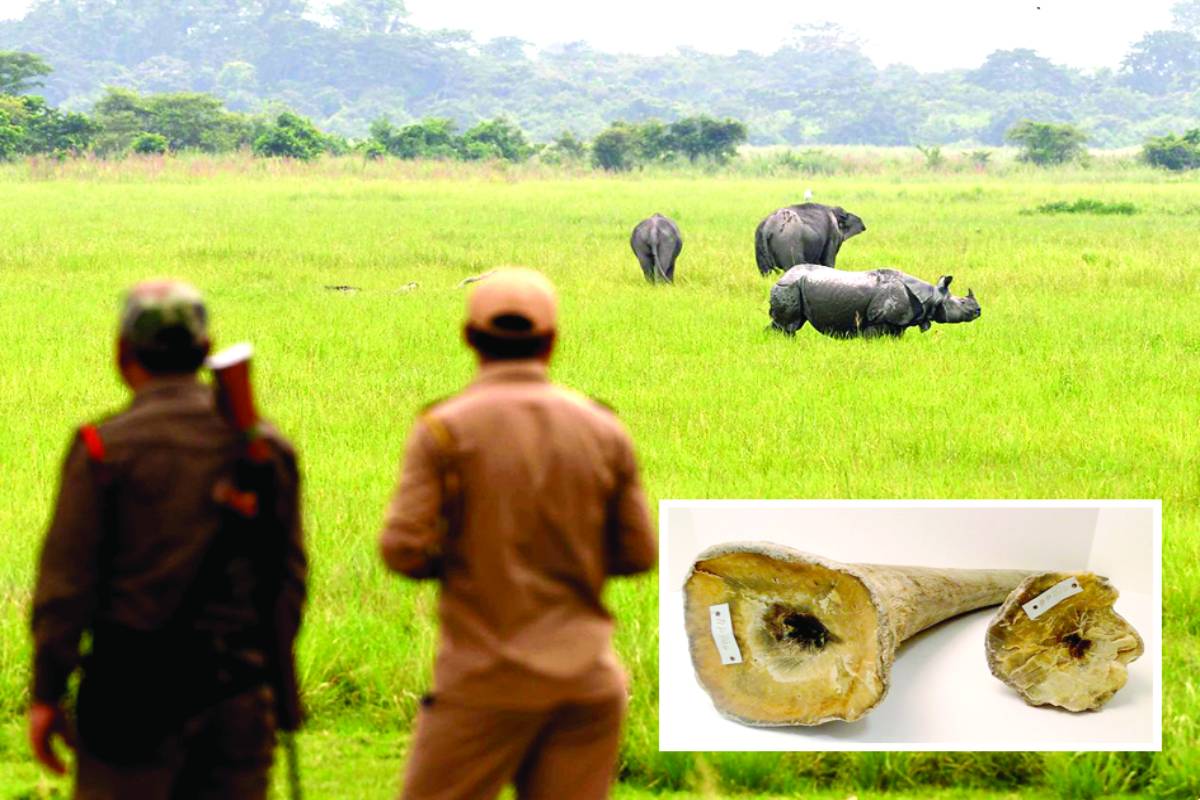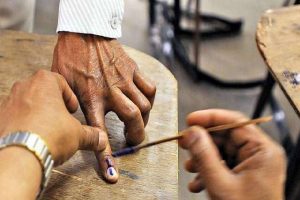Effectively destroying wildlife parts, especially the priced horns of the rhinoceros, has remained a challenge for the environment and forest department of Assam. The idea of destroying rhino horns was mooted by the department years ago as a public message that it does not carry any aphrodisiac value, for which rhinos are hunted by poachers across the world, but the authority continues to receive brickbats because of its murky track record.
The issue has come alive once again as the department started a process to verify around 2,500 recovered horns from poachers and smugglers as well as those extracted from the dead one-horned animals over the last four decades. They are now stored in government treasuries across Assam. Principal chief conservator of forest (wildlife) Amit Sahai informed that the process was already completed for treasuries in the districts of Kamrup (metro), Barpeta and Morigaon.
Of the 261 horns verified so far, 241 have been marked for destruction, quoting Sahai the forest department revealed in an official statement. He also added that the verification process was going on at treasuries in the districts of Sonitpur, Nagaon and Golaghat, among others. The department claimed that various stakeholders have been involved in the verification process of rhino horns along with elephant tusks (ivory) and body parts of other protected animals.
The destruction of horns and other animal articles will be carried out in conformity with a relevant section of the country’s Wildlife Protection Act, 1972, asserted Sahai, while adding that the department was mulling disposing of the damaged rhino horns on 22 September. Every year, 22 September is celebrated as World Rhino Day with an aim to reflect on the various challenges in the conservation of the world’s five species of rhinos.
Assam’s chief wildlife warden M K Yadava clarified that the apex court of India prevents the possession of rhino horns by any individual and it has directed burning wild animal parts, including the horns. Gauhati High Court also directed the Assam government last year to comply with it. Yadava, however, informed that around five per cent of the good quality horns would be preserved for education, awareness and scientific purposes, and certain court cases.
It may be mentioned here that the state government, following mass allegations that fake horns were kept in treasuries by replacing real ones, constituted a panel in 2016 to inspect stored rhino horns in various district reserves. The verification committee revealed that the department possessed 2,020 real horns in the treasuries. Some fake horns, made of bamboo, plastic, et al were also found in the reserves that vindicated public allegations.
Officially known as the greater Indian one-horned rhinoceros and found primarily in India and Nepal, rhinos are listed as vulnerable on the International Union for Conservation of Nature’s red list. Assam alone gives shelter to more than 2,650 rhinos in its forest reserves, which is two-thirds of its global population. The world-famous Kaziranga National Park and Tiger Reserve is known for its 2,400 rhino-residents along with other precious wildlife. Other Assam reserves supporting rhino populace include Pobitora Wildlife Sanctuary, Orang National Park and Manas National Park.
Called black ivory, the rhino horn is prized as an aphrodisiac, selling for thousands of dollars every kilogram in the international illegal market. The bulky animal enjoys great sexual power, as its mating time is over 45 minutes (much higher than any other animal). Many people believe that one can achieve the same with the help of rhino horns.
The horns are believed to have medicinal values as well. Traditional Chinese medicine requires rhino horns, which are believed to cure fever, stomach ailments and even cancer. China, Taiwan, Thailand, South Korea and West Asia are known to be huge markets for rhino horns. Veterinarians, however, say that the horns are nothing but compact masses of agglutinated hair and there is no scientific evidence that rhino horn powder could stimulate human sexual prowess.
The Assam government, which has successfully reduced incidents of single horn rhino-poaching in the last few years, continues its dream to increase its population to 3,000 soon. During the last five years, poachers could target only 22 rhinos in state forest reserves. The minister concerned recently informed the state Legislative Assembly that nine rhinos were poached in 2017, seven in 2018, three in 2019, two in 2020 and one in 2021 till date.
Statistics reveal that the Bharatiya Janata Party-led state government in Dispur has successfully reduced the number of rhino-poaching incidents with brutal laws since it came to power in 2016. Once, forest reserves in Assam witnessed as high as 27 incidents of rhino-poaching (in 2013 and 2014), followed by 17 in 2015 and 18 in 2016. A number of rhino-poachers were killed in encounters during the period while more than 650 were arrested under various wildlife-related laws.
With an aim to strengthen its fight against wildlife poaching, the Kaziranga authorities recently provided satellite phones to its guards, which is a first-of-its-kind initiative across India. Forest personnel are expected to use the sophisticated phones in six ranges of the United Nations Educational, Scientific and Cultural Organisation World Heritage Site where commercial mobile phone network is found weak. The initiative is expected to support forest guards to curb incidents of poaching.
Following debates on social media, the first official reaction came from the Dhaka-based Asia-Pacific Forum of Environmental Journalists, which welcomed the decision to dispose of rhino horns to spread a real message to superstitious customers, but put forward a condition that those wildlife parts must be scientifically confirmed as real ones. “There are ample scopes for apprehensions that with this kind of opportunities, a large number of bogus rhino horns would be destroyed and the real ones would be smuggled into illegal markets across east Asia by corrupt forest officials for their personal monetary gains,” said APFEJ president Quamrul Islam Chowdhury, adding that the department concerned should clarify its stand before initiating the final procedure.











